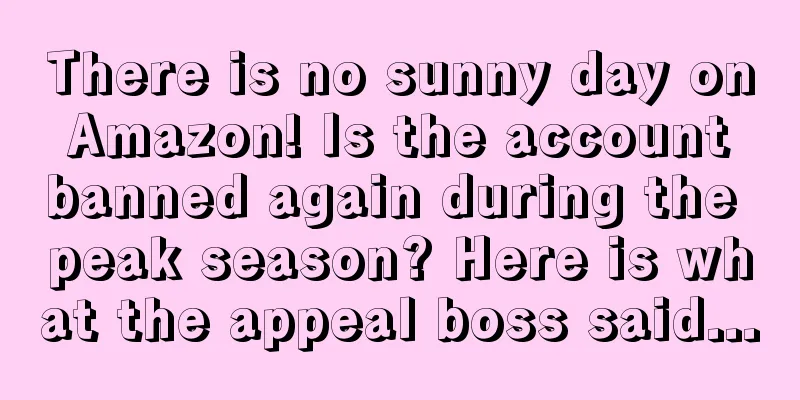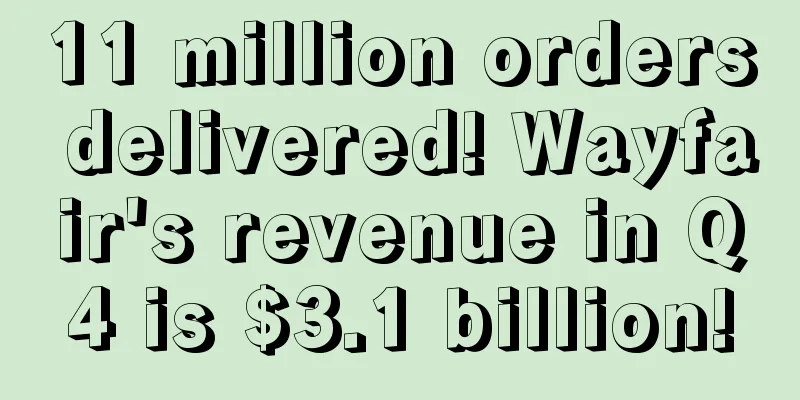Now that the 2021Q4 peak season is getting closer, sellers are preparing for peak season sales in full swing. Product selection is the most critical part of preparing for peak season sales. September is the peak season for product selection, and I believe many sellers are worried about product selection. To discover Amazon's hot trending products, the correct product selection ideas are essential.
When selecting products, sellers need to determine demand, analyze competition, select unique, high-quality products, and discard products with low demand or saturated markets. Before selecting products, sellers need to determine product standards. A good product standard should have the following characteristics: The product's price should not be too high or too low, and the recommended price range is usually $20-50, which leaves room for profit after deducting sales and advertising expenses. However, the market in this price range may be more saturated because the product's procurement cost is lower and competition is fierce. 2. Product size and weight For new and inexperienced sellers, it is recommended to start by selling products that are small and lightweight, which will help reduce shipping costs and make inventory storage more manageable. 3. Keep the product structure as simple as possible It is best not to sell products with too many fragile parts and components, because if the buyer receives a defective product, the seller will face the risk of bad reviews, high return rates and reduced sales. Especially for new sellers, try to sell categories with low maintenance costs. If the seller sells electronic categories, make sure the supplier can produce high-quality products with minimal problems. 4. Perishable or consumable items Grocery and food products are in high demand, but these products usually have a shelf life. If sellers overestimate demand, they may face the risk of a large amount of expired inventory. For food or supplements, be sure to comply with local and federal regulations. Platforms such as Amazon or Walmart also have their own rules and regulations for perishable and consumable products. Selecting products according to the above criteria will help sellers narrow down the product search range, but if sellers have a certain sales category, they should also consider other criteria. If sellers have not yet determined the sales category, the following methods may provide some ideas for product selection: 1. Start with the seller’s interests or hobbies Selling products that you are interested in will make you more enthusiastic, but just because you like a product doesn’t mean others will like it, so you need to evaluate your ideas. For example, if you like playing tennis, you can consider selling a tennis set that includes a racket, ball, and net. Sellers can also think about how to make their products better than what’s currently on the market and better solve buyers’ problems and needs. 2. Use tools to find out hot product trends Sellers can search for popular consumer trends on social media platforms, especially popular platforms like TikTok. In addition, "Think by Google" is also a good free tool that shows the most popular retail categories and the most popular search queries related to these categories. After entering the page, sellers can see a column on the left that shows the top trending categories of Google searches, as shown below: For example, after clicking on the fourth item "HandExercisers", the tool will display the popular searches related to this category in the right column. You can see that the most popular search is "Popit", and its score is "100", which represents popularity. After searching on Amazon, you will see a large number of results related to the keyword "Popit". Another free Google tool you can use is Google Trends. Google Trends will show the popularity of any topic over time, so you can find out if something is currently trending or declining. For example, after searching for "Popit", these are the search results: The popularity of the term “Popit” has steadily increased over the past 12 months and is currently at an all-time high. Sellers can also use Google Trends to understand what people are searching for the most in a particular country. Amazon offers a few different best-selling categories that sellers can dig into for inspiration. Here’s how to conduct that search: First, go to Amazon’s Best Seller page, where you’ll see the best-selling products in every major category on Amazon. While these products are selling well, new sellers are unlikely to compete with them because they already have thousands of reviews and a certain market share. Instead, sellers need to look at other Amazon listings such as New Releases, Movers & Shakers, Most Wished For, and Gift Ideas, where products listed will be popular and high-selling and will more easily compete with the top 100 best-sellers. In general, sellers should choose relatively niche products, which are less saturated but still have many potential customers. 4. Attend wholesale trade shows Trade shows are a great way to meet suppliers and manufacturers in person. Meeting suppliers in person provides a huge competitive advantage over contacting them online through sites like Alibaba. Retailers buy other brands at wholesale prices and then resell them for a profit in physical stores, on e-commerce sites, or on online marketplaces like Amazon. Trade shows are helpful for sellers who don’t want to start their own brand but want to resell other successful products and brands in their own stores. There are trade shows for almost every type of product and industry. Many brands and sellers use the B2B marketplace Alibaba to find unique products that they can private label and sell under their own brand. Alibaba operates in a similar way to Amazon. After selecting the product, the seller should conduct further screening from the following perspectives: Checking product demand can be done by looking at Google Trends. Using Google Trends, sellers can understand the popularity of specific products over a period of time by searching for keywords related to specific products. The second way is to look at product reviews. This can give you a better idea of how often people buy this category. Reviews with similar dates indicate that the product is in good demand. You can use Google Keyword Planner to view product search results. By entering the corresponding keywords, sellers can see the estimated monthly search volume, competition, etc. 2. Market competitiveness Sellers can check how much competition there is for their products by searching on Amazon and Walmart.com. If a product has thousands of reviews, then their marketplace may not be the best one to try and compete in. Products with a moderate number of reviews, 200 to 300 or less, will be an easier market to compete in. If there are one or two products that seem to have more reviews than the rest, that probably means they have the majority of the market share in that category. Depending on the platform or marketplace you want to sell on, sellers need to consider various fees such as subscription fees, selling fees, advertising fees, storage fees, shipping fees, etc. First, find out the average price that your competitors charge for their products. Then, decide on which platform you want to sell your products on, as each marketplace or platform has different fees for its respective sellers. Next, go to a website such as Alibaba, search for your chosen product, and start contacting suppliers for pricing. After getting price and shipping quotes, calculate the profit after all costs are involved, and the gross profit margin should be at least around 30-40%. Sellers should also consider a social media marketing strategy for their products and determine if it can help grow your business. Search various social media sites like Facebook, Instagram, and TikTok to see what other brands in the category are doing to market their products. Editor ✎ Xiao Zhu/ Disclaimer: This article is copyrighted and may not be reproduced without permission.
|










